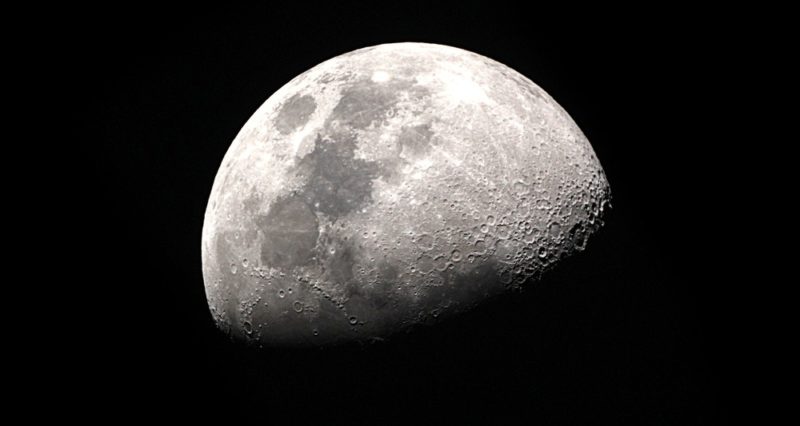Latest News

The Moon. Photo: Shutterstock
It’s been said that access to space is more available. It’s been said that the unit economics are more reasonable for aspiring orbital explorers. However, the answers to the questions of where and why are still ephemeral for those not in a capital raise in our industry.
Be it the proliferation of small satellites in Low-Earth Orbit (LEO) to provide satellite connectivity for precision agriculture tractors or the ubiquity of commercial astronaut influencers reaching destinations below and above the Karman Line ー the use cases and their destinations must come into greater focus. Our current chapter of spaceflight has further destinations with more audacious goals.
In July 2023, ISRO launched its third lunar mission, Chandrayaan-3; including a lander, rover, and propulsion module, it successfully landed in the south pole region of the Moon one month later. JAXA’s Smart Lander for Investigating Moon (SLIM) probe began its “power descent sequence” towards the lunar surface on January 20, 2024, finally sticking the landing shortly thereafter. Finally, commercial lunar programs are leveraging NASA’s Commercial Lunar Payload Services (CLPS) initiative, funding firms to build spacecraft and deliver cargo to various sites on the lunar surface.
Why are so many nations going to the Moon, with budgets under scrutiny, and the assumption that only “scientific aspiration” is serving as the driver to justify the lift? When investors – space-aware and space-curious alike – say they don’t want to invest in scientific experiments or technologies looking for a solution, what are the commercial use cases for these harder missions in lunar orbit or beyond? What economic value will they bring, and how will they deliver insights to average citizens here on Earth?
The collaboration between NASA and U.S.-based commercial space companies to fulfill the Commercial Resupply Services (CRS) contract was proof of the shift in the United States’ signature space agency strategy — and that’s just to LEO. This market-moving shift is enabling a robust LEO economy with 20 metric tons of cargo and research payloads per mission. The cargo and research do not merely represent technology in search of a problem. These payloads represent the technology solving problems like modeling cancer growth, manufacturing human organs, and predicting scalable nanoparticle manufacturing. America’s commercial space payload integrators are the use case. We use the orbital roads, commodes, power, and networking in LEO to deliver insights to the world’s healthcare and materials manufacturing industries. Next stop? The Moon.
The Use Case in LEO
NASA has successfully fostered an ecosystem where commercial entities develop, own, and manage space systems, while the agency procures services to fulfill its requirements. These services are also available for national security and fully commercial endeavors in space, providing opportunities for industry to engage in a wide range of activities beyond NASA’s needs. This strategy leverages the knowledge gained from more than a decade of collaboration with commercial entities, allowing for the application of valuable insights and lessons learned to guide future initiatives in LEO.
The impact of a singular budgetary line item in NASA’s budget is often far greater than its dollar value. NASA has invested more than $60 million of In Space Production Applications (InSPA) awards to U.S. companies with a shared mission to expand our capabilities and understanding to manufacture materials and products on the ISS. InSPA recipients like Redwire, Space Tango, and BioServe have deep flight heritages that deliver products and services of space-based data and analytics. These platforms provide crucial, real-time data, and any deviation could profoundly impact technology readiness.
This display of capability parallels the demands off-Earth for reliable, consistent, high throughput data. NASA’s commercial space providers are already poised to pave the roadmap to lunar data and comms.
From LEO to Lunar Data
How do NASA’s implementation partners communicate data to enable analytical modeling for healthcare outcomes? Data is transmitted for LEO/ISS comms through the Tracking Data Relay Satellite System (TDRSS) and, as a NASA-provided service, is accessible to implementation partners. We receive real-time alerts for when we can expect Acquisition of Signal (AOS) and Loss of Signal (LOS) – this is often triggered during a satellite handover period or when a different asset takes priority over NASA or its implementation partner’s utilization of TDRSS. As a result, providers that offer access to data during vehicle transit often have to coordinate bandwidth restrictions or requirements with NASA ahead of time; for example, Space Tango will often request additional bandwidth from NASA for the flights when we utilize the Powered Ascent Utility Locker (PAUL) facility.
Use case implementation providers are closely tracking that Project Kuiper, Starlink, Inmarsat, Viasat, SES, and Telesat were tapped to demonstrate services that could ultimately replace the agency’s existing fleet of communications satellites through the Communications Services Project (CSP) awards, totaling $278.5 million, to test how commercial satellites in LEO and Geostationary Orbit could support missions that currently utilize TDRSS.
How is this commercially viable in a lunar environment? What kind of data will need to be transmitted in a lunar orbit, and for what purposes?
Astronauts’ health in the cislunar economy will depend on analogous data collection and scientific insights. The commercial use case in the cislunar economy is no longer a scientific hypothesis, but is in the process of being actively investigated and resourced. This requires the continued evolution of our existing user interfaces and data capabilities, but against what standard?
The Lunar Communications Need
The Lunar Communications Relay and Navigation Systems (LCRNS) project directly supports science, technology, and demonstration missions; NASA’s Artemis missions; and the ongoing creation of LunaNet – a large-scale, interoperable architecture that will standardize communications, navigation, and search and rescue on the Moon.
The first question from a use case provider like Space Tango is: in the U.S., have the handoff protocols been developed/replicated from NASA to other U.S. government users from what will be LCRNS/LunaNet? What are those handoff protocols, and can commercial space users like Space Tango help shape them?
Secondly, it will be crucial that as NASA develops LCRNS and/or other USG agencies leverage it, implementation partners in commercial space should be prioritized to use the LunaNet on the Moon.
We will also use the LCRNS to get data to and from the Moon – as we will always work with whatever bandwidth is available but can be assured to maximize its availability, depending on the use case.
Thirdly, as providers try to develop additional data transmission capabilities we would need to leverage potential cloud solutions with providers like AWS, Microsoft Azure, and Google Cloud.
As we, the commercial use case providers for the cislunar economy, plan our communications strategies, we welcome the opportunity to shape these requirements for governing Lunar Comms U.S. government agencies to power our success to 3D print lunar structures, send and receive data on stem cell growth in a lunar environment, and deliver insights for terrestrial gene therapy development … from the Moon.
NASA’s implementation partners are the use case. We deliver the hardware, software, and data to turn scientific hypotheses into lunar economic reality. We need the right networks of secure communications to use from the lunar surface to ground stations on Earth and back to transmit our critical scientific data.
The future of lunar infrastructure depends on it.

Sita Sonty is the Chief Executive Officer of Space Tango. As a leader in automated systems, Space Tango provides facilities to support data collection and manufacturing in space. Prior to joining Space Tango, Sonty led the space industry practice for the Boston Consulting Group, a global management consulting firm. She also made history as the Head of Human Spaceflight Sales at SpaceX.
Stay connected and get ahead with the leading source of industry intel!
Subscribe Now